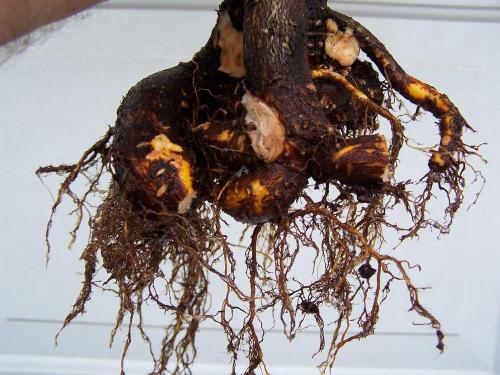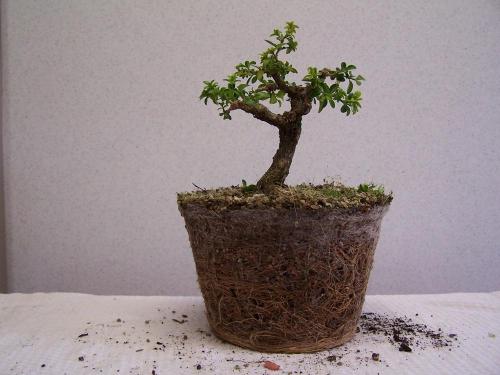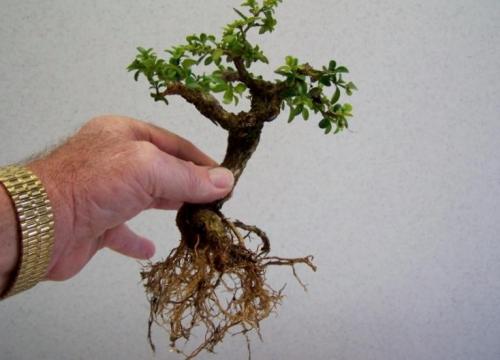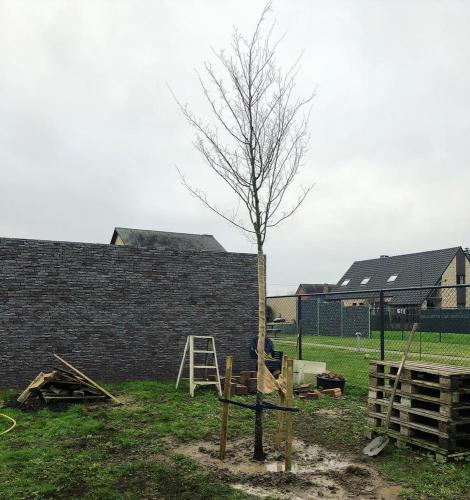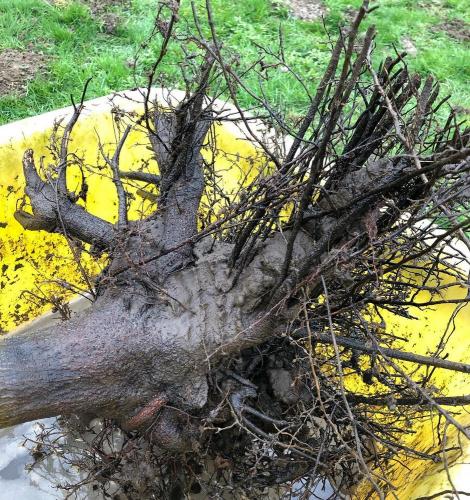For woody material, the consequences of not correcting root issues at plant out time can be severe, even if it takes many years for the plant to "grow into the problem". The tree below was lifted from the nursery can, dropped into the planting hole, and the hole backfilled. The result were a dead tree several years later as the tree "grew into" the situation where encircling/girdling roots terminated the downward flow of photosynthate through the cambium, which resulted in the roots being starved.
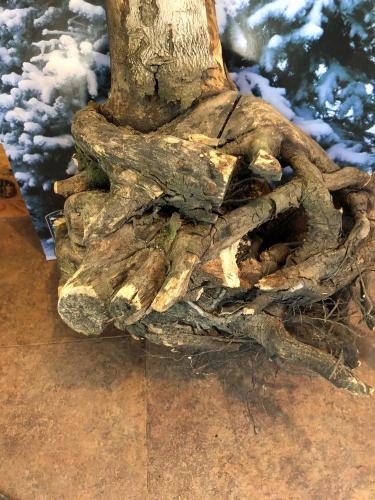
Ideally, growers would buy their trees dormant, so they can plant as soon as the frost is out of the ground in areas that experience frost, and prepare them for planting out by bare-rooting and removing all problem roots. Problem roots include diseased/ damaged encircling/ girdling/ crossing/ roots, roots growing straight up (or nearly so) or back toward the center of the root mass, and j-hooked roots. The planting hole should be large enough to accommodate the root mass and should be back-filled with native soil unless the soil is sandy.
Read more:
https://s3.wp.wsu.edu/uploads/...
The most vigorous part of the plant is found in the root to shoot transition area. Unlike humans who age chronologically, plants age ontogenetically, so the newest tissue to grow is the oldest tissue on the plant, and the youngest (most juvenile) tissues will be found at the root to shoot transition, which is how "rejuvenation pruning" got its name - from cutting the plant back to more juvenile tissues. So, pruning roots gives them something of a new lease on life.
When it comes to putting together mixed floral plantings or planting bedding plants in the landscape I follow two practices depending on how rootbound the plant is in the pot or cell-pack it came in. If the soil falls away from the roots, I don't do anything to the roots - I simply plant it in the pot alone or with other plants, or directly into the garden or beds. IF the root/soil mass comes out of the pot intact, that is to say as a unitized mass of soil and roots, I rip the bottom half of the roots off without any thought of being cautious, then work my fingers up into the remains of the soil/root mass to spread it out more horizontally, and plant it. I have been doing this for as long as cell packs and plastic post have been around, and would be happy to provide images of mixed plantings I have put together using that technique. It produces stronger and healthier root systems and happier plants than trying to preserve the roots and go to great lengths to prevent damage. Typically, I toss the roots and soil I remove from the bottom of the soil/root mass into a plastic tub, and use them to stuff around the base of the plantings after they're planted to provide additional stability.
Al


